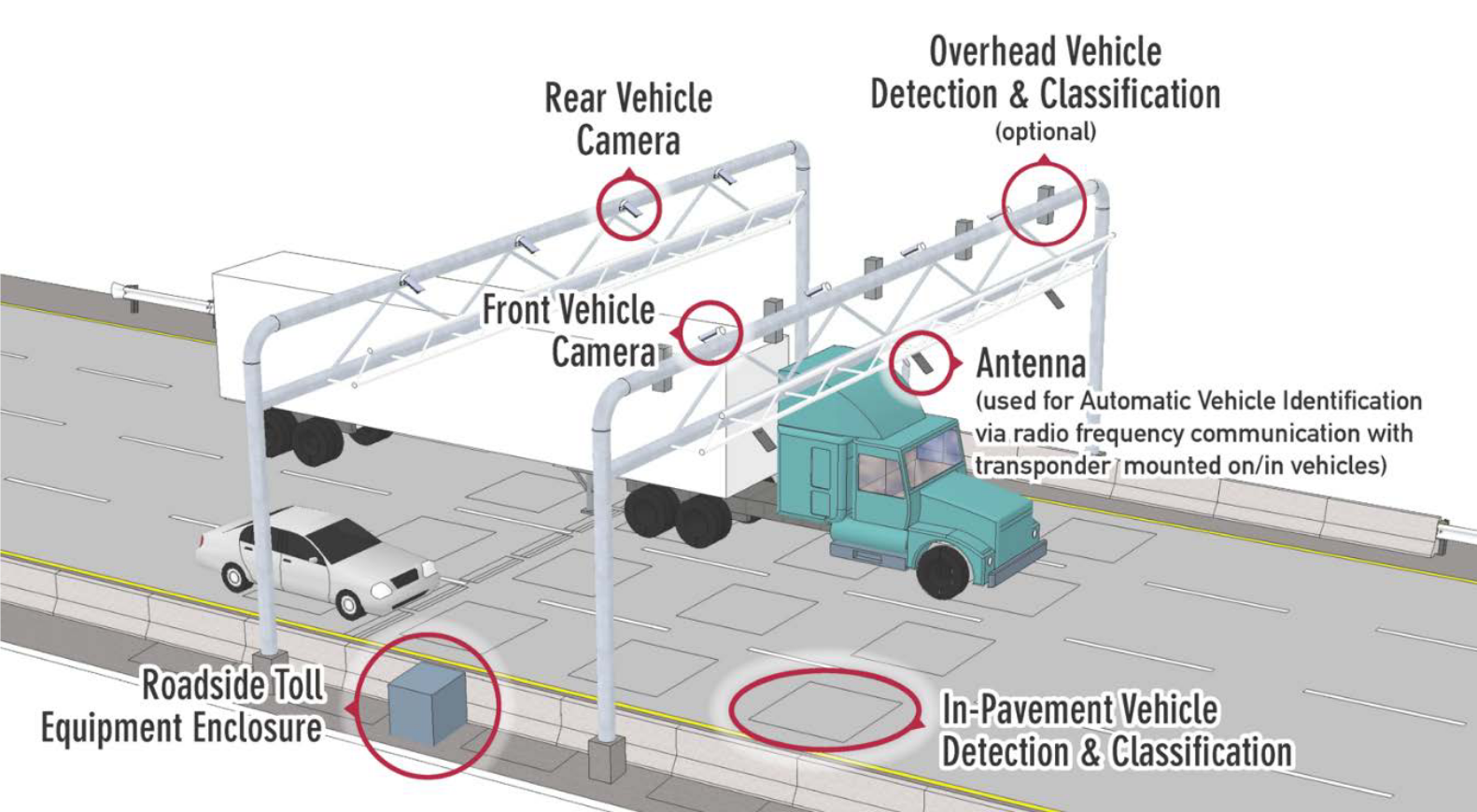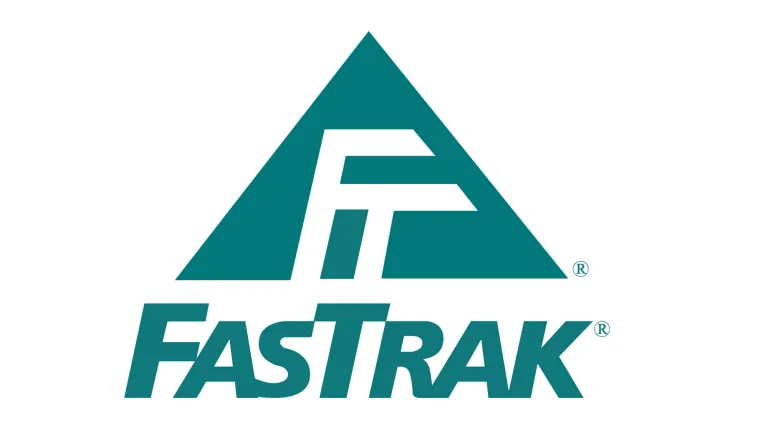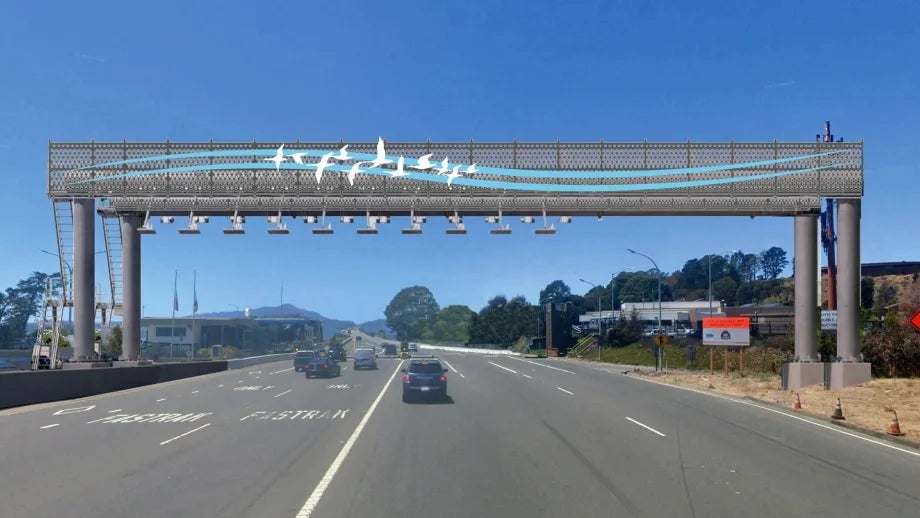Open Road Tolling
The Open Road Tolling (ORT) Program will streamline the driver experience when the toll booths are removed from the seven state-owned toll bridges.
A conceptual toll gantry design for the Richmond-San Rafael Bridge. A gantry with toll equipment is centered over the lanes, and the toll plaza has been removed.
Why Do We Need the Open Road Tolling (ORT) Program?
The ORT Program will replace the current, aging toll system with newer “toll gantry” technology that will be optimized to process all tolls electronically.
These days, it is not necessary for drivers to stop at toll booths to pay the toll. The ORT Program will remove the toll booths and update the roadway through the toll plaza area, improving safety and highway operations.
Project Benefits
The implementation of ORT will result in more efficient tolling, increased safety at toll plazas and provide a consistent regional experience to Bay Area travelers. Implementing ORT has also been shown in other regions to improve traffic flow and reduce vehicle emissions.
What's a Toll Gantry?
A toll gantry is an overhead structure with mounted toll readers.
Bay Area Express Lanes use gantries above part of the roadway. In the former toll plazas, the ORT Program will install gantries that cross the entire roadway.
In the illustration at the top of this page, a conceptual toll gantry design is shown at the Richmond-San Rafael Bridge. A The toll plaza has been removed and replaced with toll equipment centered over the lanes.
See the "How Does ORT Work" section below for an illustration of what an ORT gantry may look like.
How Does ORT Work?
 The ORT toll system is a roadside system that detects vehicle information as drivers pass through the toll zone.
The ORT toll system is a roadside system that detects vehicle information as drivers pass through the toll zone.
A typical ORT roadside system is shown in the figure above. Overhead cameras, antennae and associated toll equipment are mounted on gantries that span the entire width of the roadway. This equipment captures toll tag and license plate information. Inductance loops are embedded in the pavement and centered on the travel lanes. These loops are used to count the number of axles to assign the right toll rate. The Roadside Toll Equipment Enclosure houses computer processors that package the pieces of information into a single toll transaction. This data is transmitted to the FasTrak Customer Service Center to collect the toll from customers.
Construction Period
Construction news and updates will be available at Caltrans District 4 projects page.
Construction is planned to begin in 2026.
Before, during and after construction, the collection of tolls will be seamless to the customer. Customers will continue to be able to use their FasTrak toll tag or use their license plate to get an invoice in the mail. While this program will shift the location where tolls are collected from the traditional toll plaza to a gantry over the road, the toll collection process is unchanged.
Public Comment
Staff updates on the program will be provided during BATA Oversight Committee meetings. Members of the public are invited to comment during these meetings.
Comments and questions may be directed to info@bayareametro.gov with the subject line “ORT Webpage Comment."
Toll payment options will be no different under the ORT Program. Drivers can set up a FasTrak account or a Pay By License Plate account to pre-pay tolls. Vehicles without pre-paid accounts will receive an invoice in the mail. A FasTrak toll tag in the designated HOV lane with the required occupancy is required to receive HOV discounts.

The toll plazas in use today were designed for both cash and electronic payment.
In response to the COVID-19 pandemic, Governor Newsom removed the cash toll booth collectors from the toll plazas on March 21, 2020. This is a permanent change, so there will be no more cash collection at Bay Area toll booths.
This effectively changed the toll collection system to operate as an all-electronic system. For FasTrak customers, there was no change on how to pay tolls. For drivers without a FasTrak account, invoices were (and continue to be) sent through the mail.

